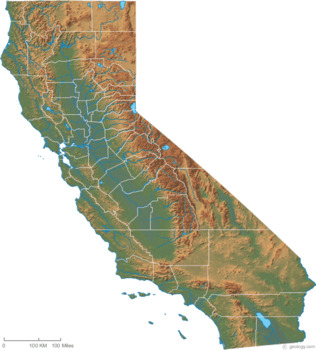Salt Dough California Regions Map for Distance Learning
Travelisfun
7 Followers
Grade Levels
3rd - 5th
Subjects
Resource Type
Standards
CCSSCCRA.L.6
NGSSK-ESS3-1
NGSS4-ESS3-2
NGSS4-ESS3-1
Formats Included
- Google Slides™
Pages
15 pages
Travelisfun
7 Followers

Made for Google Drive™
This resource can be used by students on Google Drive or Google Classroom. To access this resource, you’ll need to allow TPT to add it to your Google Drive. See our FAQ and Privacy Policy for more information.
Description
This is a grab and go, self-directed project. Students will create a salt-dough topographical map of California. They will label the regions. This slide presentation has detailed instructions to allow students to do this from home.
The ingredients are listed. Instructions go step by step. It is a STEM project that they can work on from home with their parents.
Total Pages
15 pages
Answer Key
N/A
Teaching Duration
1 Week
Report this resource to TPT
Reported resources will be reviewed by our team. Report this resource to let us know if this resource violates TPT’s content guidelines.
Standards
to see state-specific standards (only available in the US).
CCSSCCRA.L.6
Acquire and use accurately a range of general academic and domain-specific words and phrases sufficient for reading, writing, speaking, and listening at the college and career readiness level; demonstrate independence in gathering vocabulary knowledge when encountering an unknown term important to comprehension or expression.
NGSSK-ESS3-1
Use a model to represent the relationship between the needs of different plants or animals (including humans) and the places they live. Examples of relationships could include that deer eat buds and leaves, therefore, they usually live in forested areas; and, grasses need sunlight so they often grow in meadows. Plants, animals, and their surroundings make up a system.
NGSS4-ESS3-2
Generate and compare multiple solutions to reduce the impacts of natural Earth processes on humans. Examples of solutions could include designing an earthquake resistant building and improving monitoring of volcanic activity. Assessment is limited to earthquakes, floods, tsunamis, and volcanic eruptions.
NGSS4-ESS3-1
Obtain and combine information to describe that energy and fuels are derived from natural resources and that their uses affect the environment. Examples of renewable energy resources could include wind energy, water behind dams, and sunlight; non-renewable energy resources are fossil fuels and fissile materials. Examples of environmental effects could include loss of habitat due to dams, loss of habitat due to surface mining, and air pollution from burning of fossil fuels.


